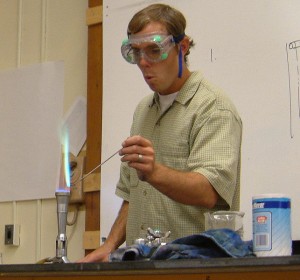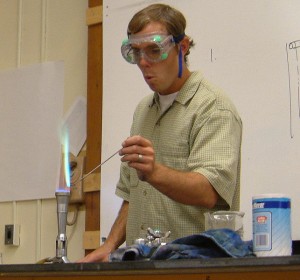 So this is probably the last chemical in your set you haven’t used… I had to really dig into my ‘bag of tricks’ to find something suitable for you to practice with.
So this is probably the last chemical in your set you haven’t used… I had to really dig into my ‘bag of tricks’ to find something suitable for you to practice with.
Ammonium chloride is found near volcanoes and coal mines, as glue for plywood, in hair shampoo, in the electronics industry in solder, and also is fed to cows. It’s not typically experimented with in the chemistry lab, but since it’s in your set, I thought we’d play with it and see if you can figure out a few of its properties.
Use gloves and goggles when handling ammonium chloride, and make sure you have a fire extinguisher and a grown up handy!
Please login or register to read the rest of this content.


Right, but you don’t want to dispose of Ammonium Chloride down the drain as it can be toxic to aquatic life. You can read more about handling it here:
https://beta-static.fishersci.com/content/dam/fishersci/en_US/documents/programs/education/regulatory-documents/sds/chemicals/chemicals-a/S25168C.pdf
Hi there, how should we clean up from this experiment? I’m assuming we should rinse three times, wash with soap and water, and rinse three times again.
Chloride is a compound of chlorine (an element on the periodic table). When people talk about chloride, they can refer to the ion (Cl-, which is a negatively charged chlorine atom) or part of a name when it’s bonded to other elements, like hydrogen chloride (HCl).
What is a chloride, is that an element? A cleaner? Or is it just part of the name?
Is there a food that explodes? Would it be magnesium? I saw something explode in a bar (a powder) on a TV show and I can’t figure it out.